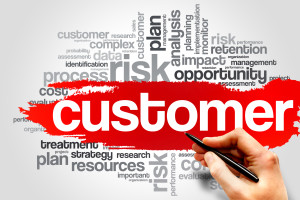
Check-list: The key points of customer identification
Customer identification guidelines were established by the European Union to help various types of companies, including banks and insurance companies, to remain vigilant in the fight against money laundering and the financing of terrorism.
These requirements are known under the acronym KYC “Know your customer”
These guidelines are also for you!
KYC is also relevant for credit risk control… Being able to clearly identify your “customer” is essential in assessing the commercial opportunity as well as the solvency risk. At first glance, this seems so obvious but it is less so when working with a company which has a complex legal structure or when exporting to companies operating under different regulations.
What are the key points in identifying a customer?
- The name of the company
- The name must be precise ,
- Sometimes there might be an acronym which needs to be understood
- Parentheses should not be deleted. They often specify a country name or a generic term such as “Group”. For example Company (Group) Latina SA and Company Group Latina SA can be two different entities.
- The legal identification number
- Legal entity identification numbers implemented by the EU do not always offer a reliable picture. Whereas some Id’s may be individual to companies others might be common to the companies of the same group. Check for the exact number.
- Contact information
Should these identifiers fail then the full address becomes essential – tricky when we tend to email everything. Remember to jot down phone or fax numbers (if there are any). Raising awareness amongst your sales team is also vital as their knowledge of the market is crucial when it comes to spotting a prospect or any changes within one of your customers. If you are credit insured, make sure your request is accurately recorded and check that the insurer’s response matches your exact customer details. An insurer will not indemnify you if your credit limit does not cover the right customer. If you take legal action against a customer, it has no chance of success if you do not pursue the correct legal entity.
“Know your customer” is not a one off operation but a constant monitoring. You may well deal with the same person within a company whose legal structure or shareholders have changed. So be careful!

